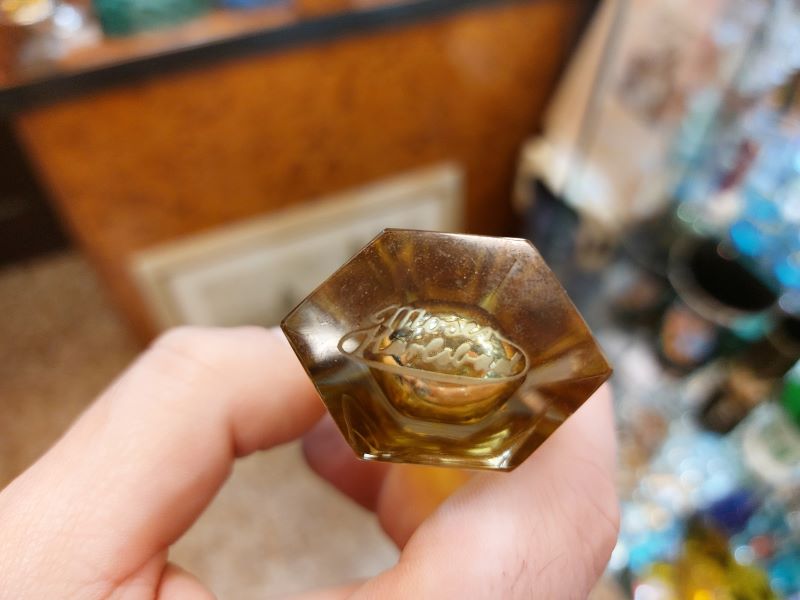Did you find glass objects in your grandparents’ attic, did you get your hands on an object that you think might be old and valuable? Or are you playing with the idea of buying a piece over the internet? And so you wonder how to recognize antique glass.
Whatever the reason, the answer to how to recognize antique glass is unfortunately not so simple. But we can still give you valuable tips on what to do before you go to an expert and how to choose one.

The first steps – how to recognize antique glass
Historical period
First, get to know what was made in the period – you can start by finding out whether the object you have in your hand was made in that period. Whether the techniques, decoration, colouring and so on were used at that time.
Starting with what you are currently holding in your hand is more guaranteed to be successful than starting by directly studying the period. After all, it cannot be said unequivocally that this or that was the only way to produce glass within certain era. The different periods were intertwined – whether we are talking about Art Nouveau and historicism or Art Deco and rondocubism (which, moreover, is more typical of Czech republic than of other countries).
In addition, each glassworks, according to its sources and the designers who worked there at the time, could differ or focus more on a particular style/technique of work. Whether it was the creation of standard trends or specialization in certain technologies, such as malachite glass (more about it here), uranium glass (more about it here) or techniques such as engraving and cutting (for which the Bohemian crystal was particularly suitable – more about it here.) or admitted replicas in the historicism period.
Technique and wear – ways how to recognize antique glass
What we value in handmade glass is precision, humanity, uniqueness. The idea that the object was made by human hands adds to its charm. At the same time, it can also create minor inaccuracies – irregularities, tiny bubbles or inaccuracies in thickness. Nothing is a carbon copy. It can serve as a good indicator of the authenticity of antique glass.
At the same time, as with everything, glass shows wear and tear. Whether it be specific edge wear or decoration. The colours may gradually fade or become slightly crumbled. Wear and tear can be mimicked by a skilled forger. Even so, you can often tell the difference whether someone has just used sandpaper or whether the wear has been caused by years of handling or exposure to the sun.
Marking
A common tip for identifying antique glass is to find the maker’s mark. If you haven’t found it, don’t despair. In fact, only a few companies actually marked.
But at least some glassworks did indeed engrave or etch marks directly onto the product (most often on the bottom) or directly inside the glass. So that the mark would not interfere. And you might find it.
However, only a few large companies did this. Many others just used paper labels, which usually just fell off over time.
In fact, it was only later that marks started to be used more in the case of art or design pieces. (And even then, a company brand or an engraver’s monogram/signature was not a requirement.)

Expert opinion
Because of the missing marks and the skill of the forgers, it is better to find a specialist. Ideally, someone who really knows glass itself. That is, someone who specializes in glass specifically, not just antiques.
Because knowing how to identify antique glass requires years of practice. You need to know details such as the type of engraving, the type of engraving tools. But also how the colour of the glass behaves – its shades and reflections, or how the glass looks in the sun and under artificial light.
Colour, by the way, is very difficult to replicate in a way that would look truly authentic. Along with wear and tear, colour is therefore one of the main clues for an expert in how to recognize antique glass.
Is it always possible to know everything?
In addition to experience, period catalogues also serve the expert. These exist for almost everything after World War II. It is thus possible to get to know the glass quite well, even to tell which glassworks produced the item.
Of course, an expert can also recognise older glass, but it is not always possible to give details – as the location, the glassworks as such or the exact period. For items from 20th centure but before the World War II it is possible to be this precise for about 1/3 of the products. In the 19th century, details are more likely to be determined by an educated guess. However, items from aristocratic collections, gifts to museums directly from the original owner, and so on can be identified with certainty.
More about glass
Vintage metallurgical glass
The precisely engraved glass, the refraction of crystal glass, the timeless decors of art deco glass are amazing. But each of us at sometimes longs for an elegance that carries…









